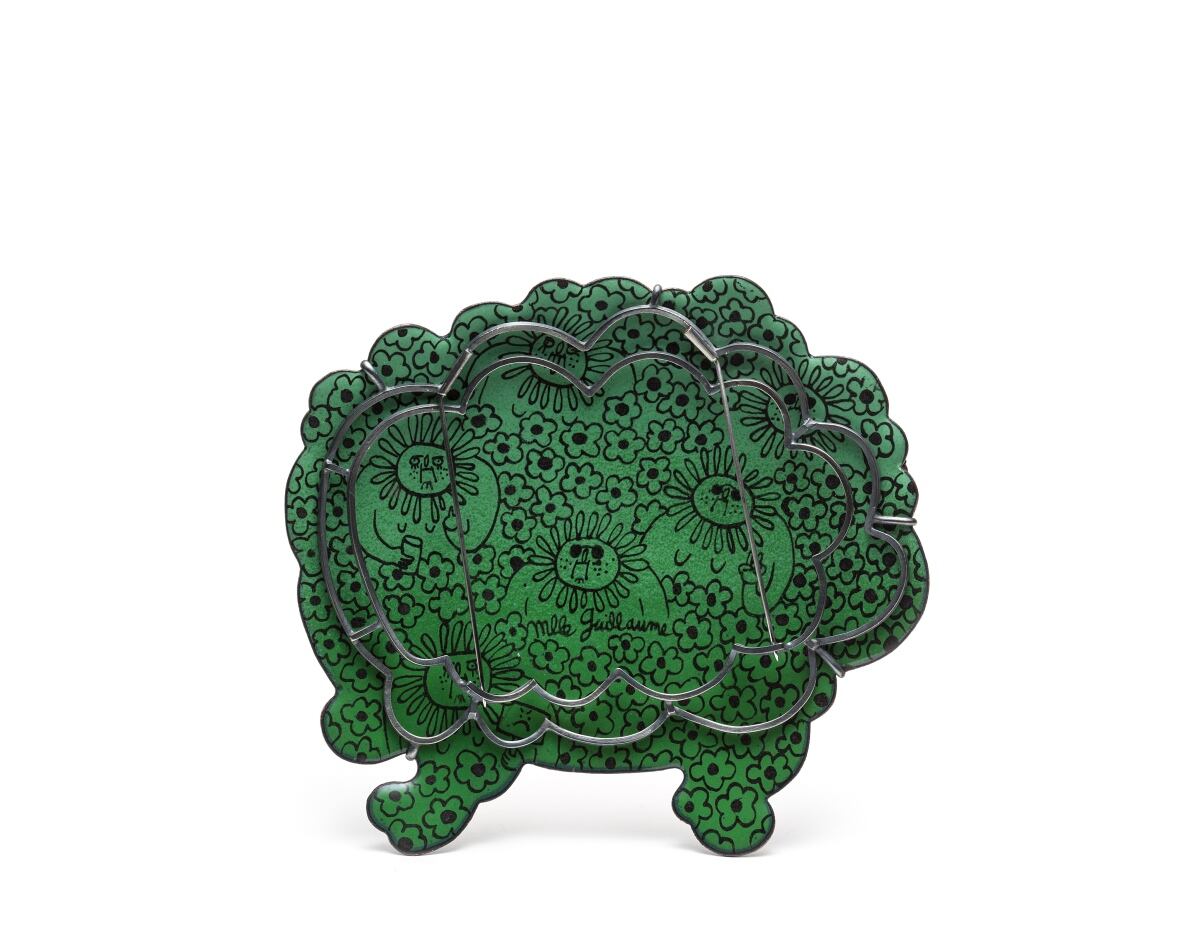How one Montreal jewelry designer is 'brooch-ing' feminist issues
They're big, they're angry — and you can wear them on anything. Check out the work of Aurélie Guillaume

Say it with jewelry? For Montreal artist Aurélie Guillaume, it's her favourite way to tell a story.
Guillaume, 27, is an award-winning maker of cloisonné art jewelry. It's a technique associated with Fabergé eggs or Byzantine-era crown jewels. Guillaume, however, creates pins and necklaces inspired by comics and street art and her own off-kilter observations from everyday life.


Her brooches, which sell for several thousands of dollars, are often as big as grapefruits and bursting with hand-drawn details that cover both the front and back of each piece.
They're larger than life, just like her cast of cartoon characters, and according to Guillaume, each one illustrates a different tale — though she'll leave you to puzzle out the plot for yourself.
But despite the work's psychedelic Adventure Time vibe, Guillaume's latest series takes on some very topical realness.
It's called Say it With Flowers, and she's currently showing the collection at Melle Finelli Jewelry in Boston.
"I've been creating these big characters — these big, angry frilly flowers," Guillaume tells CBC Arts. "I wanted to challenge the ideas we have about women and femininity."
"Each flower talks about one of the issues we face as women," she explains.
Women have started to speak up about their opinions and their bodies and their right to do whatever they want! So I really wanted to kind of talk about that.- Auré lie Guillaume, artist
There's a sex-positive blossom, surrounded by birds and bees. There are blooms — both outraged and chill — who stand up for their rights. Our branches, ourselves, as it were.
One flower lady, engulfed in cigarette smoke — and possibly pooting another noxious gas out her rear end — is called "Whatever Man." Says Guillaume: "She doesn't want anyone to tell her what to do, what to think. She doesn't want to be mansplained, you know."






Flip any given flower over, and you'll find a garden of extra characters. It's a reminder, as she puts it, that we're "all in this together."
"The flower's always been the big symbol for representing femininity and women," Guillaume says. "It's always as if we have to be quiet and nice and polite and beautiful and always put together. But I don't think it's true, especially today."
"There's a lot of things that are changing, especially in the last year. Women have started to speak up about their opinions and their bodies and their right to do whatever they want! So I really wanted to kind of talk about that as well through my work, and by using the symbol of the flower, but making them as big as possible, and hairy and angry and just — be who they are."
Creating a righteously nasty flower is a demanding, and risky, proposition. The candy-coloured gloss of enamel jewelry is achieved by fusing coloured glass on metal. It takes multiple layers — 15-20, in the case of Guillaume's work — and with each layer, the piece must be fired at 1500 degrees. If anything goes wrong, the piece is lost. Days of work could be melted away.
"At first, I didn't know that I was going to become a jeweler," says Guillaume, who's been working with enamel for four years. "I thought I was going to become an illustrator for kids books or magazines — anything really."
When she discovered enamel while at art school in Montreal, she realized she could combine both worlds.




Her brooches make for some seriously extra pieces of flair. And while each piece is meant to be worn, Guillaume designs them to be displayed in the home, as well.
"Often jewelry is hiding in a box, and I find that just so sad," she says. "It disappears from our sight and we don't remember it or we don't admire it. And I think jewelry is beautiful, so I wanted my pieces to still be standing on their own, even though they're not worn." At the exhibition in Boston, for example, the flowers are presented like sculptures.
"I've always taken inspiration from my everyday life and my memories and things that I see," she says.
"I tend to want to see things as if I was living in a comic book or cartoon — to try and see what's humourous about life, even in the most tragic moment."






Aurélie Guillaume and Zachery Lechtenberg. Toc Twee. March 16 at Galerie Noel Guyomarc'h, Montreal. www.galerienoelguyomarch.com
Aurélie Guillaume. Say it with Flowers. To Jan. 13 at Melle Finelli Jewelry, Boston. www.mellefinellijewelry.com

